Tools Required
SA9413NE SIR Deployment
Fixture
The inflator module can be deployed inside or outside of the vehicle. the method
used depends upon the final disposition of the vehicle. Review the following procedures
in order to determine which will work best in a given situation.
Deployment Inside the Vehicle -- Driver, Passenger, Left Curtain, and/or
Right Curtain
Deployment inside the vehicle is proper when the vehicle is to be destroyed
or salvaged for component parts. This includes, but is limited to, the following
situations.
| • | Vehicle has completed its useful life. |
| • | Vehicle has been damaged beyond repair in a non-deployment-type accident. |
| • | Vehicle has been stripped or damaged beyond repair in a theft. |
Caution: Refer to SRS Inflator Module Deployment Caution in the Preface section.
| • | Vehicle will be salvaged for component parts to be used on a
different vehicle identification number (VIN) as opposed to being rebuilt as the
same VIN. this is done to ensure SIR system integrity since ONLY NEW SIR COMPONENTS
MAY BE USED IN SERVICING AN SIR EQUIPPED VEHICLE. Never use the SIR components from
another vehicle. Always replace the SIR components with NEW COMPONENTS. |
Deployment Procedure
Procedures for deployment of a live (undeployed) inflator module within the
vehicle are as follows:
- Lower driver and passenger windows. Turn the ignition switch OFF and remove
the ignition key.
- Check that all inflator modules which will be deployed are mounted securely.
| • | driver inflator module is secured to steering wheel |
| • | passenger inflator module is secured to the instrument panel |
| • | left curtain inflator module is secured to left roof rail |
| • | right curtain inflator module is secured to right roof rail |
- Remove all loose objects from the front seat and the inflator module covers.
- Disable the SIR system.
- Refer to
Disabling the SIR System
and
Enabling the SIR System
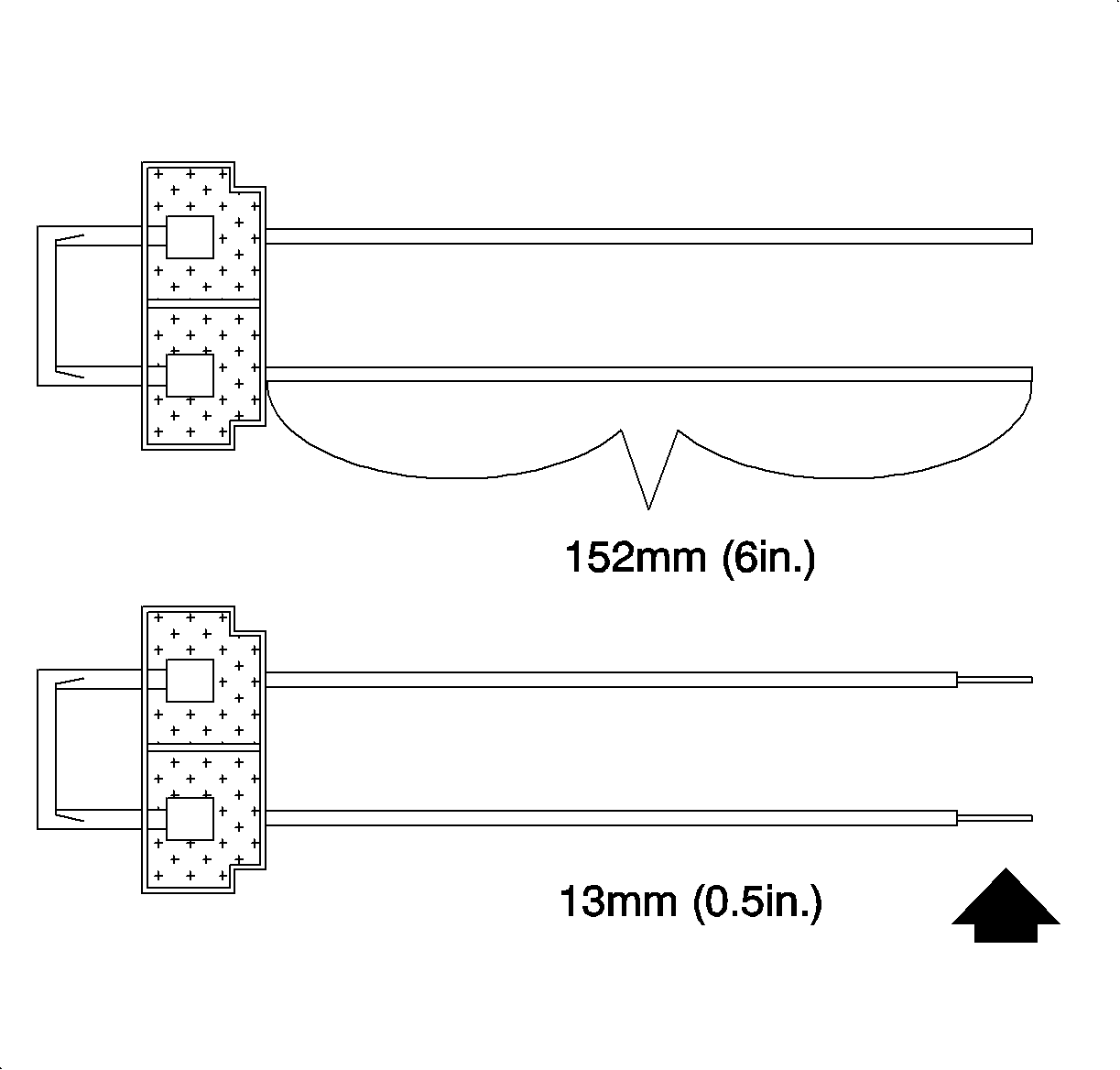
- Cut the two wires of each yellow two-way connector away from the vehicle harness
at least 150 mm (6 in) of wire at the connector.
- Strip 13 mm (1/2 in) of insulation from each of the connector
wire leads.
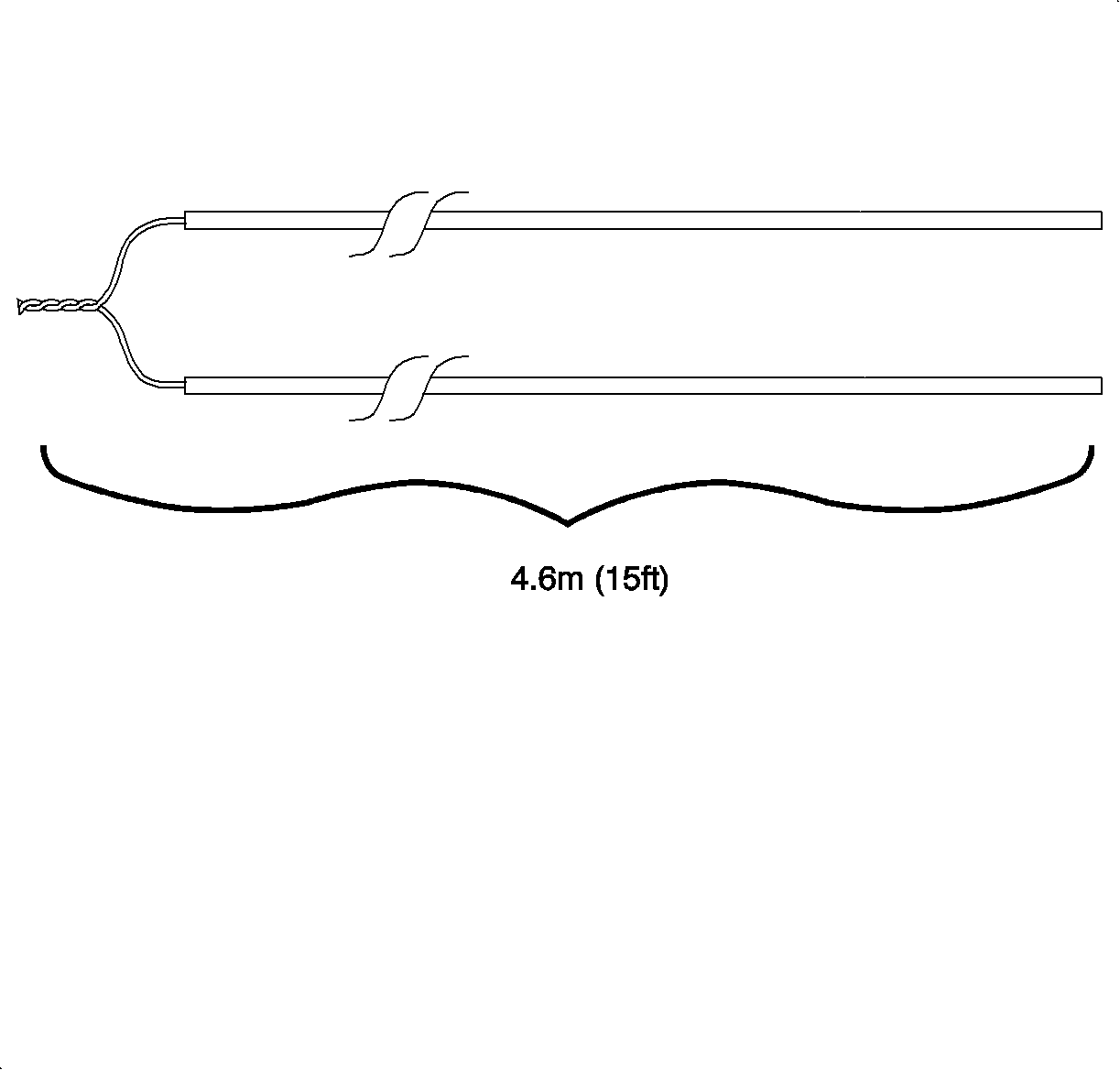
- Cut two 4.6 m (15 ft) deployment wires from the multi-strand
wire (18 gage or thicker). These deployment wires will be used to fabricate
a deployment harness.
- Strip the 13 mm (1/2 in) of insulation off both ends of
each deployment wire cut in the previous step.
- Short the two deployment wires by twisting together one end from the each.
Deployment wires shall remain shorted and not be connected to a power source until
the air bag is to be deployed.
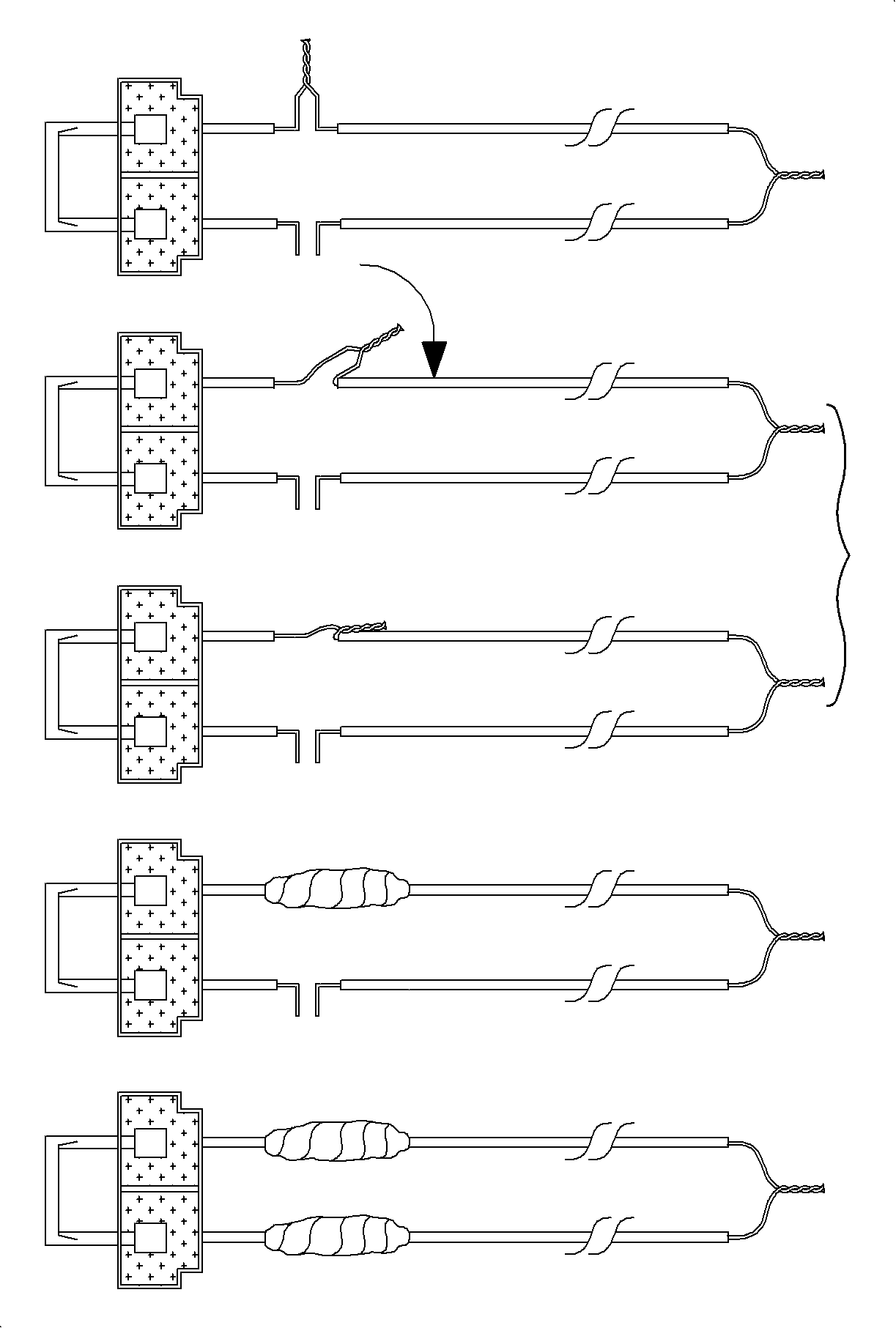
- Twist together one connector wire lead to one deployment sire. The connection
should be mechanically secure.
- Bend the twisted connection, (made in step 10), flat and wrap tightly
with electrical tape to insulate and secure.
- Twist together, bend, and tape the remaining connector wire lead to the
remaining deployment wire as in steps 10 and 11.

- Connect the deployment harness to the yellow 2-way connector of the inflator
module to be deployed.
| - | for the driver inflator module or the passenger inflator module, connect
to appropriate connector at the base of the steering column. |
| - | for the left curtain inflator module or right curtain inflator module,
connect to the connector under the C-pillar trim. |
- Stretch the deployment harness wires from the vehicle to their full length.
- Verify that the vehicle is clear of all people, loose objects, or flammable
material.
Important: When deploying an inflator module, the rapid expansion of gas is very loud which
may startle the uninformed. Notify the people in the immediate area that an inflator
module will be deployed.
- Separate the two ends of the deployment wires that were twisted together in
step 9.
- Temporarily connect the deployment wires to a 12 volts minimum/2 amps
minimum power source to deploy the inflator module. A vehicle battery is suggested.
(Inflator module deployment will occur when contact is made).
Caution: Refer to SRS Inflator Module Deployment Caution in the Preface section.
- Put on a pair of shop gloves and safety glasses to protect your
hands and eyes from possible irritation when handling the deployed inflator module.
- Dispose of the deployed inflator module through normal refuse channels
after it has cooled for at least ten minutes.
- Wash hands with a mild soap.
- In the unlikely event that the inflator module did not deploy after following
this procedure:
| 22.1. | Short the two deployment wires by twisting the ends together. |
| 22.2. | Remove the inflator module from the vehicle. (Refer to either Driver Inflator
Module, Passenger Inflator Module or Curtain Inflator Module removal procedures. |
| 22.3. | Temporarily store the inflator module with its trim cover facing up, away
from the surface on which it rests. |
| 22.4. | Call the Saturn Technical Assistance Center for further instruction on
disposal. |
Deployment Outside the Vehicle (Driver Inflator Module, Passenger Inflator
Module, Curtain Inflator Module)
Caution: In order to prevent accidental deployment of the air bag which could cause personal
injury, do not dispose of an undeployed inflator module as normal shop waste. The
undeployed inflator module contains substances that could cause severe illness or
personal injury if the sealed container is damaged during disposal. Use the following
deployment procedures to safely dispose of an undeployed inflator module. Failure
to dispose of an inflator module as instructed may be a violation of federal, state,
province, or local laws.
Deploy the inflator module outside of the vehicle when the vehicle will be returned
to service. Situations that require deployment outside of the vehicle include the
following:
| • | Using the SIR diagnostics, it is determined that the inflator module is
malfunctioning. |
| • | The inflator module is cosmetically damaged (scratched or ripped). |
| • | The inflator module pigtail (if equipped) is damaged. |
| • | The inflator module connector is damaged. |
| • | The inflator module connector terminals are damaged. |
Deployment and disposal of a malfunctioning inflator module is subject to any
required retention period.
Before performing the deployment procedure, you should be familiar with the
SIR service precautions and proper inflator module handling.
Caution: Refer to SRS Inflator Module Deployment Caution in the Preface section.
Deployment Procedure
Procedures for deployment of a live (undeployed) inflator module outside of
the vehicle are as follows:
- Turn off the ignition
- Remove the ignition key.
- Put on safety glasses.
- Remove the inflator module from the vehicle. Refer to the following:
| • | When removing the driver inflator module, refer to Driver Inflator Module
removal procedure. |
| • | When removing the passenger inflator module, refer to Passenger Inflator
module removal procedure. |
| • | When removing a curtain inflator module, refer to Curtain Inflator Module
removal procedure in this service manual. |
Caution: Refer to SIR Inflator Module Handling and Storage Caution in the Preface section.

- Temporarily place the inflator module, with the vinyl trim cover facing up
and away from the surface, on a work bench or other surface away from all loose or
flammable objects.
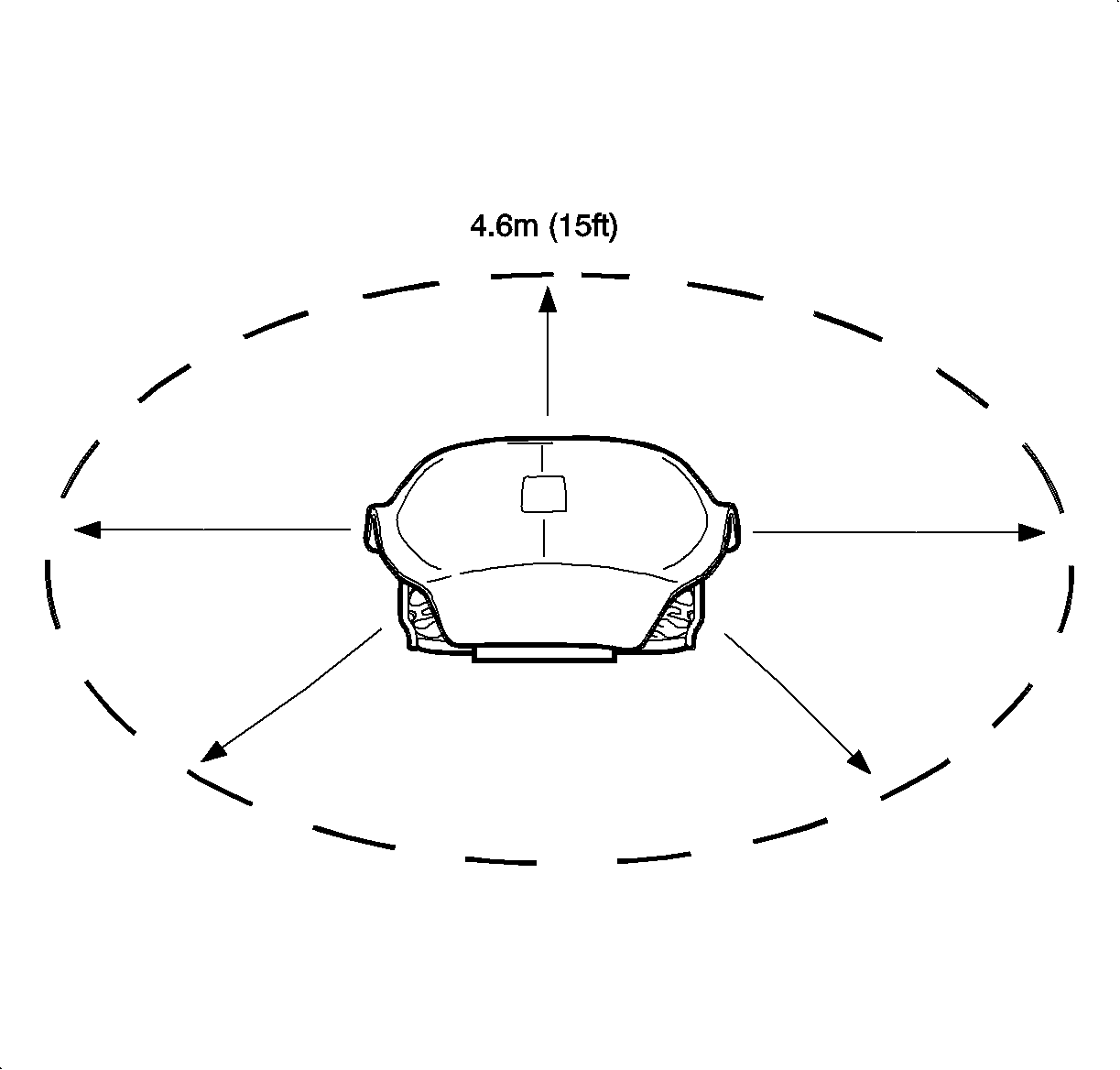
- Select a paved outdoor location to perform deployment. Clear a space on the
floor and make certain no loose objects or flammable material are within 4.6 m
(15 ft) of the inflator module. Make sure you have sufficient ventilation.
- When deploying a driver inflator module, place the inflator module in
the center of the space with the vinyl trim cover facing up.
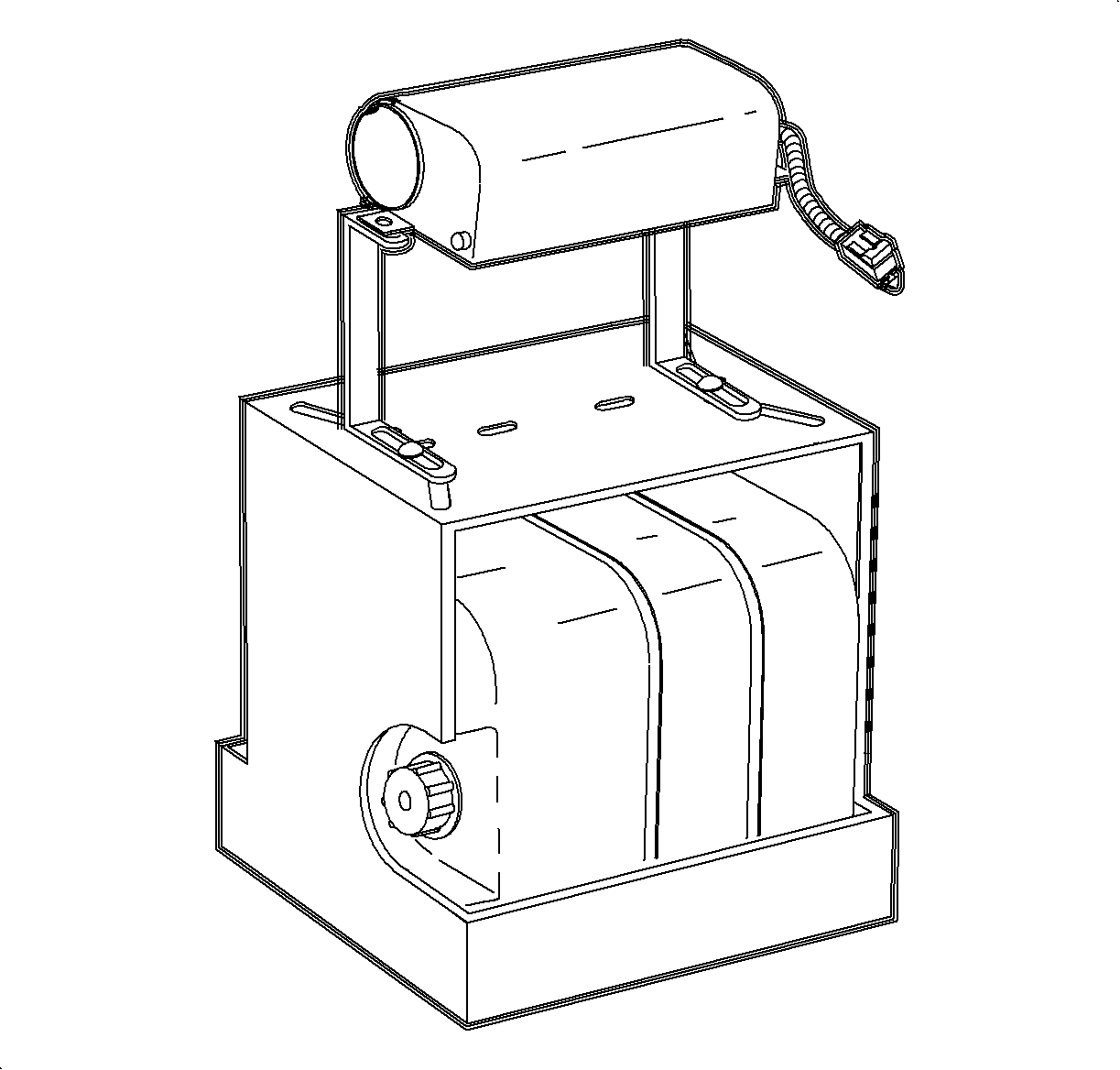
- When deploying a passenger inflator module, refer to the following instructions:
| • | Place the SA9413NE
in the center of the cleared area. |
| • | Fill plastic reservoir in deployment fixture with water or sand to provide
sufficient stabilization of fixture during deployment. |
| • | Attach curtain inflator module in the deployment fixture using the Flange/Arm
Mounting Method shown in the illustration. |
Important: Securely hand-tighten all fasteners prior to deployment.
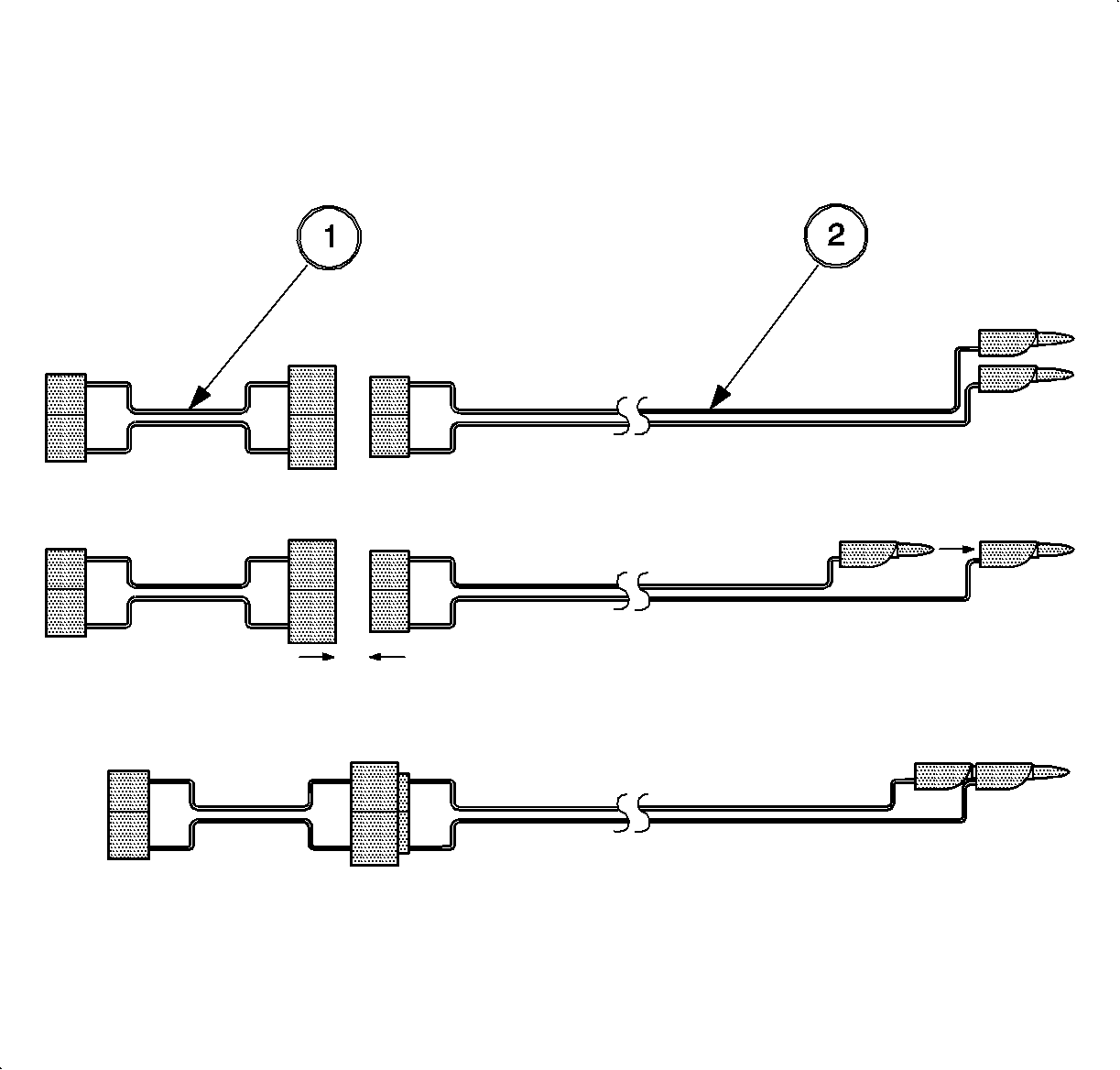
- Inspect the SA9207Z-A
and the appropriate pigtail
adapter, SA9414Z-99
for the driver
air bag or SIR Deployment Adapter SA9207Z for the passenger air bag or curtain air
bag, for damage. Replace as needed.
- Short the two Universal SIR Deployment leads (2) together by fully seating
one banana plug into the other, The Universal SIR Deployment Harness shall remain
shorted and shall not be connected to a power source until the air bag is to be deployed.
- Connect the appropriate pigtail adapter (1) to the Universal SIR Deployment
Harness (2).
Important: Make sure that the adapter connector is fully seated into the inflator module
connector. Failure to fully seat connectors may leave the shorting bar located in
the inflator module connector active and may result in non-deployment of inflator
module.

- Extend the SIR deployment harness and adapter to full length from the deployment
fixture or area.
- Connect the inflator module (1) to the adapter (2) on the SIR deployment
harness.
- Verify the driver inflator module is resting with its vinyl trim cover
facing up or that the passenger inflator or curtain inflator is mounted properly
to the deployment fixture.
- Verify the area around the inflator module is clear of all people, loose
objects, or flammable material.
Important: When deploying an inflator module, the rapid expansion of gas is very loud which
may startle the uninformed. Notify the people in the immediate area that an inflator
module will be deployed.
Important: When the inflator module deploys, the deployment fixture may jump about 30 cm
(1 ft) vertically. This is a normal reaction of a deploying inflator module
due to the force of rapid gas expansion inside the air bag.
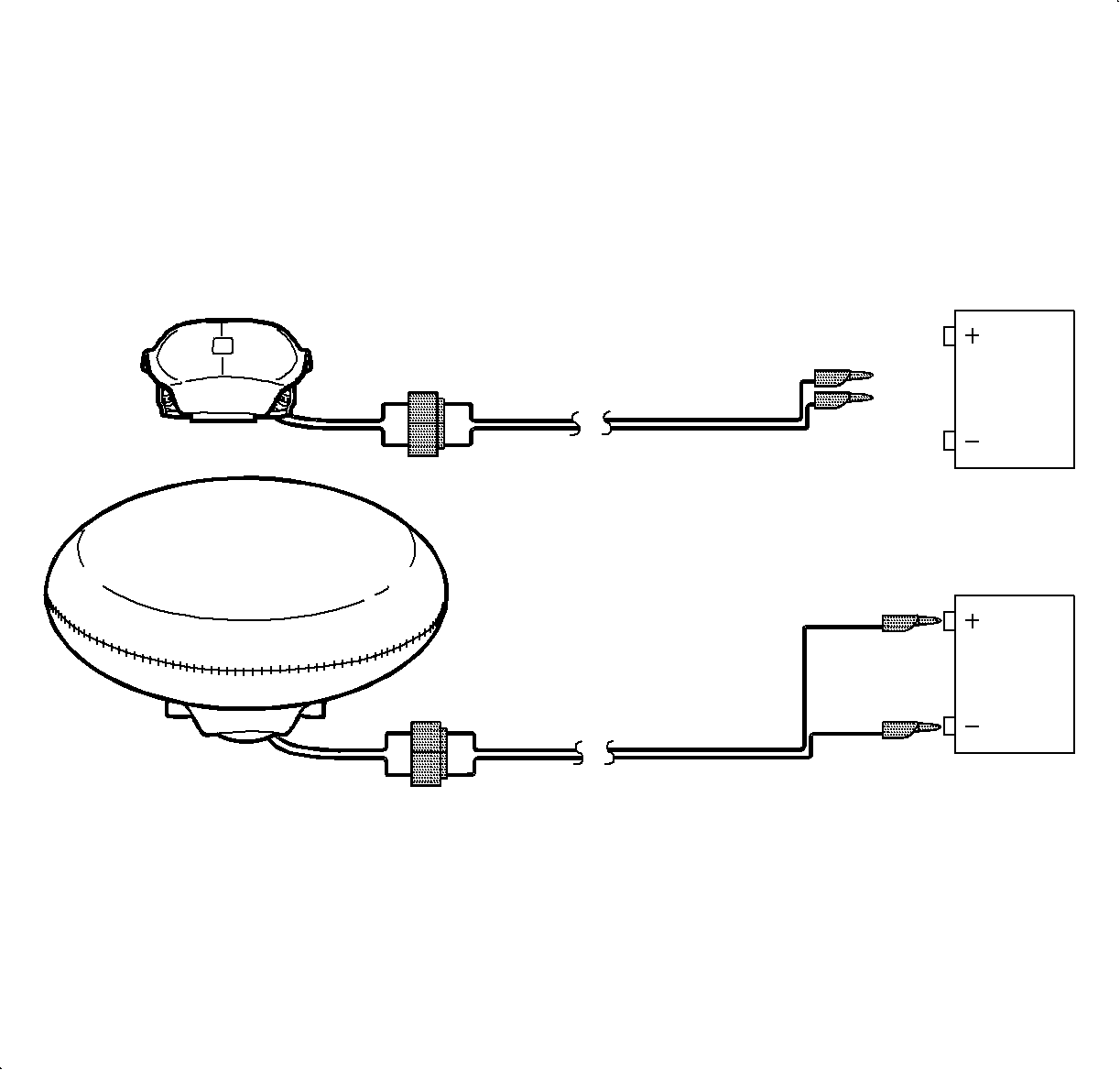
- Separate the two banana plugs on the SIR deployment harness that were shorted
together earlier in the procedure.
- Place a 12 V minimum/2A minimum power source near the shorted end
of the deployment harness. A vehicle battery is suggested.
- Connect the SIR deployment harness wires to the power source. Inflator
module deployment will occur when contact is made.
- Disconnect the SIR deployment harness from the power source.

- Short the two deployment
harness leads together by fully seating one banana plug into the other.
Caution: Refer to SRS Inflator Module Deployment Caution in the Preface section.
- In the unlikely event that the inflator module did not deploy
after following this procedure, disconnect the pigtail adapter and discontinue the
procedure. Temporarily store inflator module with its trim cover facing up, away
from the surface on which it rests. Call the Saturn Technical Assistance Center for
further instructions. If the inflator module did deploy, proceed to the following
steps.
- Put on a pair of shop gloves to protect your hands from possible irritation
and heat when handling deployed inflator module. Safety glasses should also be worn
to protect your eyes.
- Disconnect the pigtail adapter from the inflator module as soon as possible
after deployment to avoid the possibility of damage to the pigtail adapter or the
deployment harness due to possible contact with the hot inflator module canister.
The deployment harness is designed to be reused. It should, however, be inspected
for damage after each deployment and be replaced if necessary. The pigtail adapter, SA9414Z-99
or SA9207Z-A
, may become damaged because of high temperatures
and should be discarded after deployment outside the vehicle.
- Dispose of the deployed inflator module through normal refuse channels
after it has cooled for at least 10 minutes.
- Wash hands with a mild soap.











